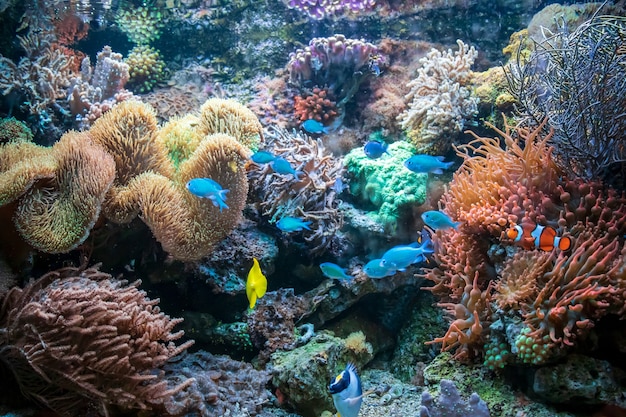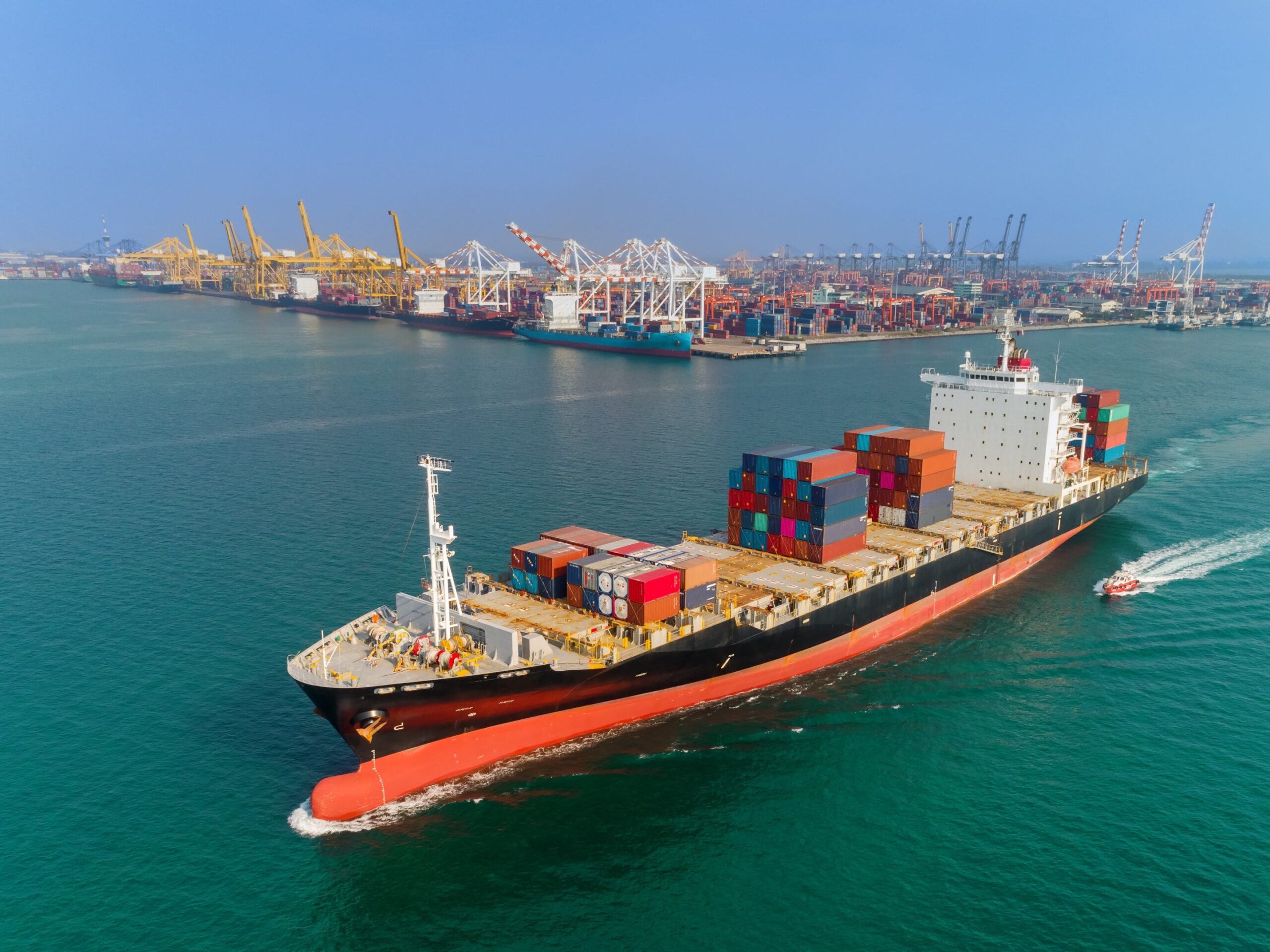Shipping and maritime trade is a critical part of global trade, moving goods across the world’s oceans efficiently. But this efficiency usually comes with a significant environmental cost. Traditional shipping methods contribute to pollution and climate change. That’s why we need green shipping for a cleaner, more sustainable approach to the maritime industry.

What is Green Shipping?
Green shipping refers to practices that aim to reduce the negative environmental impact of maritime transport. It includes using cleaner fuels, improving fuel efficiency, reducing emissions, and adopting new technologies. The goal is to make shipping sustainable, which means operating in a way that doesn’t harm the planet. The focus is on making the sustainable maritime industry a reality by finding ways to reduce pollution and operate ships in a more eco-friendly manner.
Why is it Important?
Green shipping is important because the traditional shipping industry contributes to a significant amount of carbon emissions and pollution. In fact, shipping accounts for about 3% of the world’s carbon dioxide emissions. If we want to tackle climate change and protect the planet, sustainability in the shipping sector must be a priority.
Not only does green practices reduce emissions, but it also ensures cleaner air and water, protecting both marine life and the health of coastal communities. It’s a necessary step toward a sustainable maritime industry that can continue to support global trade without harming the environment.
International Maritime Organization (IMO) regulations play a vital role in advancing sustainable maritime trade by setting global standards that reduce the environmental impact of maritime activities. Key regulations include the IMO 2020 Sulphur Cap, which limits sulphur emissions, the Ballast Water Management Convention to prevent the spread of invasive species, and the Energy Efficiency Design Index (EEDI), which promotes energy-efficient ship designs. These regulations collectively help lower greenhouse gas emissions, protect marine ecosystems, and encourage sustainable shipping practices worldwide.
Advantages of Green Shipping
1. Lower Carbon Footprint:
By using cleaner fuels and more efficient engines, green shipping helps reduce the carbon footprint of maritime transport, making the industry more sustainable.
2. Improved Fuel Efficiency:
Modern ship designs and better route planning help ships use less fuel, which not only cuts costs but also reduces harmful emissions.
3. Healthier Marine Ecosystems:
Green shipping reduces pollution, protecting the ocean and marine life from harmful chemicals and invasive species.
4. Long-Term Cost Savings:
Although green shipping may require upfront investment, it saves money in the long run through fuel savings, reduced maintenance, and avoiding environmental fines.
5. Staying Ahead of Regulations:
As environmental regulations become stricter, green shipping ensures compliance with industry standards and helps avoid penalties.
What Green Shipping Means for Sustainable Development
At the heart of green shipping is sustainability. It’s not just about cutting emissions, it’s about creating a system where maritime transport does not need to deplete resources or damage ecosystems. Shipping sustainable practices are essential to protecting our oceans, reducing waste, and ensuring that shipping can meet future demands without causing harm.
When we talk about sustainability in shipping, we’re also talking about a shift in how the industry operates, focusing on long-term environmental health as much as short-term economic gains. By prioritizing sustainable methods, the maritime industry can play a significant role in the global movement toward a greener planet.
How Green Practices Help Marine Life and Ecosystems

The ocean is home to an incredible diversity of species, and many are adversely impacted by traditional shipping practices. However, green shipping offers solutions that help protect both flora and fauna, as well as entire marine ecosystems. Here’s how:
– Using Cleaner Fuels: Cleaner, low-sulphur fuels are a cornerstone of green shipping. By reducing sulphur emissions, ships help prevent ocean acidification, a phenomenon that harms coral reefs, fish, and other marine species that rely on balanced pH levels in the water.
– Treating Ballast Water: Traditional ballast water discharge can introduce invasive species into non-native waters, disrupting local ecosystems. Green shipping practices include the treatment of ballast water to prevent the spread of these invasive organisms, thereby protecting local biodiversity.
– Reducing Noise Pollution: Noise from ships can disrupt the communication and migration patterns of marine mammals such as whales and dolphins. By implementing quieter engine technologies and better navigation practices, green shipping helps minimize noise pollution, safeguarding these species’ natural behaviours.
– Minimizing Waste and Spills: Green shipping promotes stricter waste management practices, reducing the risk of oil spills, chemical leaks, and the dumping of harmful materials into the ocean. This not only protects marine life but also helps maintain cleaner, healthier waters for both flora and fauna.
By adopting green shipping practices, the shipping industry can dramatically reduce its negative impact on marine life and ecosystems, ensuring that our oceans remain vibrant and full of life for generations to come.
Common Misconceptions
There are a few myths about green shipping that stop some people from embracing it. Let’s clear up some of these misconceptions:
It’s Too Expensive: While there are initial costs to adopting greener practices, the long-term savings in fuel, maintenance, and regulatory compliance make it a smart investment.
It Only Focuses on Emissions: Green shipping isn’t just about cutting emissions. It includes reducing water pollution, managing waste, and improving overall fuel efficiency.
The Technology Isn’t Ready: Green technologies, like cleaner fuels and energy-efficient engines, are already in use today. The industry is rapidly adopting these advancements, proving that green shipping is not only possible but also effective.
How Technology Helps Sustainable Shipping
Technology plays a huge role in making shipping sustainable. Here’s how:
– Alternative Fuels: Cleaner fuels like liquefied natural gas (LNG) and hydrogen help cut down emissions and reduce the shipping industry’s reliance on traditional fossil fuels.
– Energy-Efficient Ship Designs: New ship designs focus on reducing fuel use by minimizing drag and optimizing engine performance, making ships more eco-friendly.
– Digital Route Optimization: Digital tools help ships plan the most efficient routes, reducing fuel consumption and emissions.
– Emission Monitoring: Advanced systems track and monitor emissions, helping ship operators ensure compliance with environmental regulations.
These technologies not only make sustainability in shipping achievable but also keep the industry competitive by reducing costs and improving efficiency.
What this means for the Future

The future of the maritime industry is green. As environmental awareness grows, shipping companies will need to adopt sustainable practices to stay competitive. Green shipping will become the standard, driven by new technologies, stricter regulations, and consumer demand for eco-friendly solutions.
By focusing on sustainability in shipping, the future will see:
Cleaner Oceans: Reduced pollution and waste will help keep oceans healthy and thriving.
Healthier Marine Life: Fewer emissions and better waste management will help protect ecosystems and marine species.
More Efficient Operations: Greener technologies will improve fuel efficiency, cutting costs while reducing environmental impact.
In the long run, shipping sustainable practices will not only protect the environment but also help the industry grow in a responsible way.
Green Shipping in Indian Maritime Trade

India, with its vast coastline and thriving ports, has a critical role to play in global trade. By adopting green shipping practices, Indian maritime trade can reduce its environmental footprint and ensure sustainability in shipping for future generations.
As India’s shipping industry grows, it’s vital to incorporate green technologies and sustainable practices. Doing so will protect local marine ecosystems, support economic growth, and contribute to the global push for a cleaner, greener maritime industry.
Conclusion
Green shipping is the future of the maritime industry. By adopting eco-friendly practices and focusing on sustainability in shipping, the industry can reduce its environmental impact while maintaining efficient and profitable operations. With the help of technology and a commitment to greener methods, the sustainable maritime industry can thrive, protecting the planet for future generations.
The move towards sustainable shipping is not only necessary but also beneficial in the long run. Together, we can sail towards a cleaner, more sustainable future.
FAQs
1. What is green shipping?
Green shipping involves using sustainable practices and technologies to reduce the environmental impact of maritime operations. This includes reducing emissions, improving fuel efficiency, and protecting marine life.
2. Why is green shipping important for sustainable development?
Green shipping helps reduce pollution, lowers carbon emissions, and protects marine ecosystems, making it crucial for achieving sustainability in shipping.
3. How does green shipping benefit the environment?
By adopting cleaner fuels, improving ship designs, using renewable energy, and managing waste, green shipping reduces harmful impacts on the environment, leading to cleaner oceans and healthier marine life.
4. What role does technology play in green shipping?
Technology helps optimize routes, monitor emissions, and develop energy-efficient ship designs, making shipping sustainable and environmentally friendly.
5. How can green shipping impact the future of maritime trade?
Green shipping will lead to more efficient, cost-effective, and eco-friendly maritime operations, ensuring the sustainable maritime industry thrives while protecting the planet.

Leave a Reply